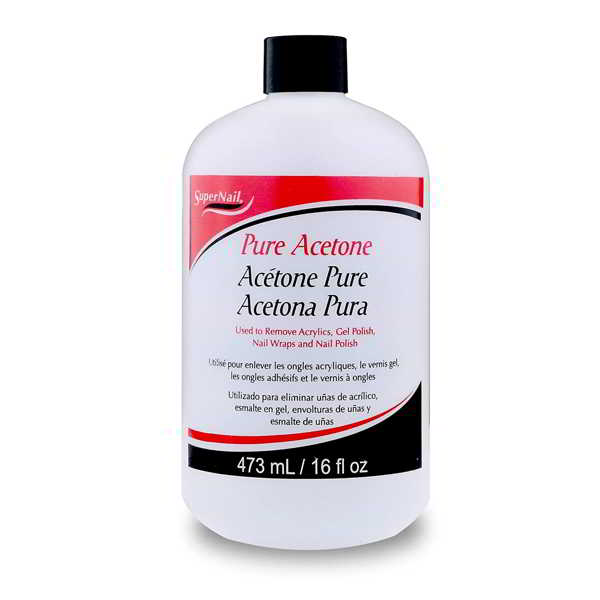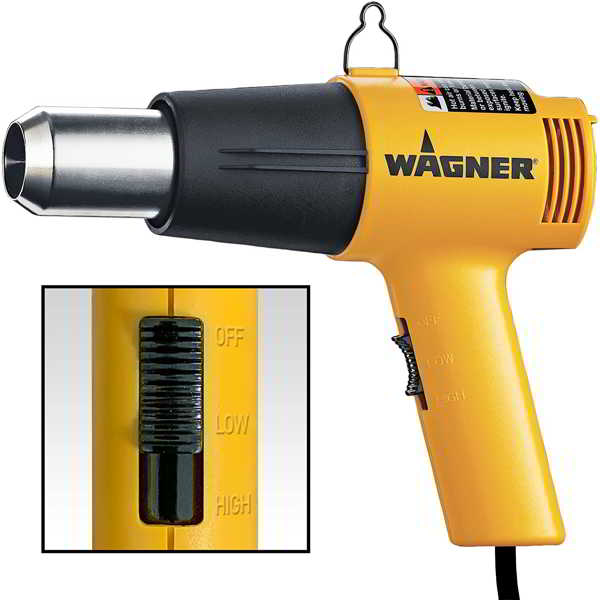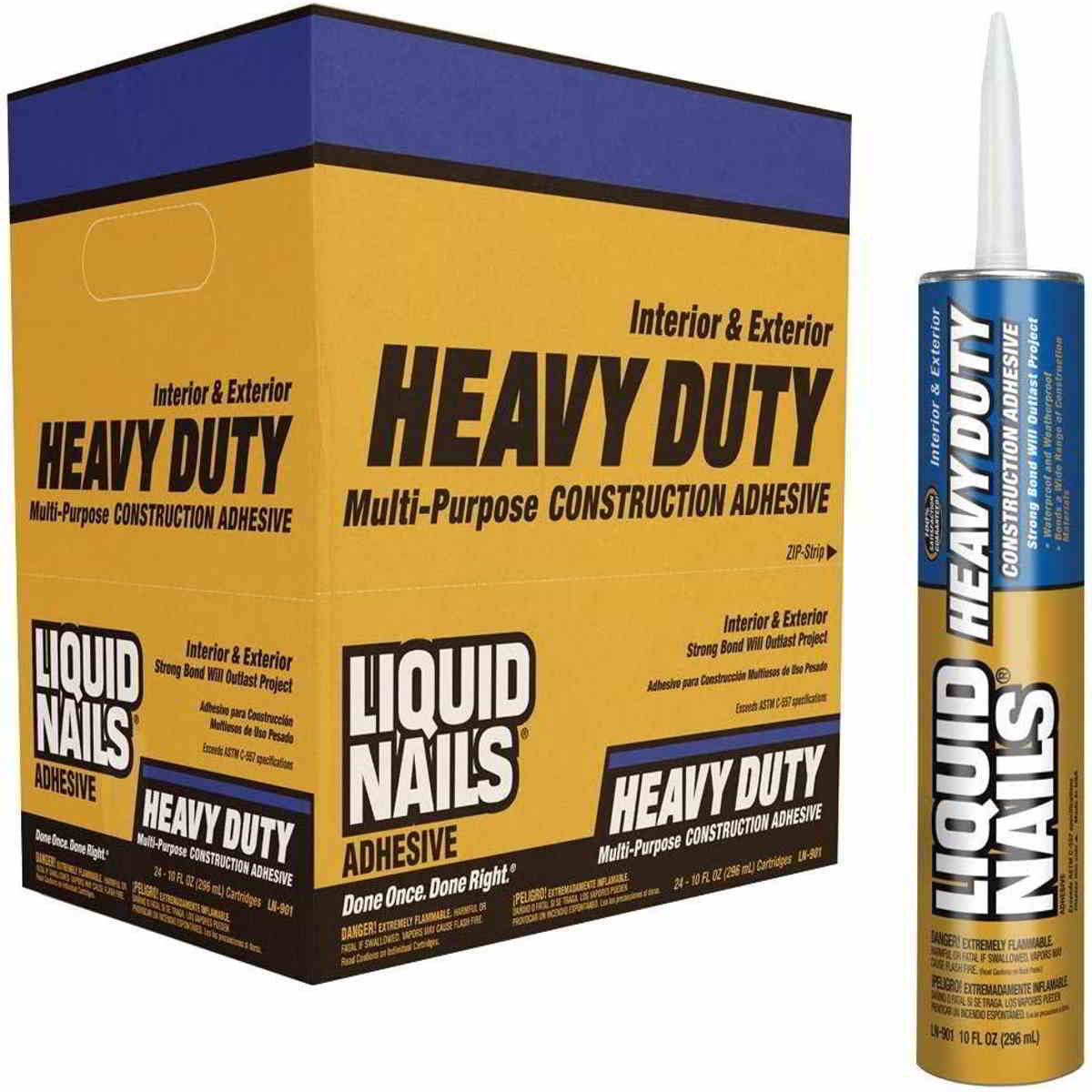As an Amazon affiliate, we may earn a small commision from qualifying purchases.
Whether you are doing some repairs or some new construction, liquid nails are invaluable.
However, no matter how careful you are, accidents are inevitable and may eventually occur.
This will leave you with liquid nails on your surfaces or wrongly bonded surfaces.
Problem is, removing these liquid nails may be a headache as they start drying immediately they are out of their tubes.
And if you leave the adhesive to dry just for a few minutes, they tend to become even harder to remove.
So, what should you do when you have spilt liquid nails on your surface?
In this article, I will take you through ways of removing liquid nails from your surfaces, your skin, and how to separate bonded surfaces.
Let’s dive right in.
How to remove dried liquid nails
We will subdivide our article into 4 main sections:
- Removing liquid nails from skin
- Removing liquid nails from clothes
- Removing liquid nails from surfaces
- Removing liquid nails from bonded surfaces
Let’s begin.
How to remove liquid nails from skin
When it comes to removing liquid nails from your skin, latex-based adhesives are the easiest to remove. Indeed, all you need to do is simply wash them with soap and water and you are done.
However, for solvent-based liquid nails, the process ain’t that easy.
First of all, you will need to apply and rub petroleum jelly, vegetable oil or eucalyptus oil on the affected part of your skin.
Why?
Well, it helps soften the spot thereby easing the removal process of the adhesive.
All the same, if the liquid nails adhesive had completely dried, it won’t be that easy and you will probably have to repeat this process till all the solvent-based liquid nails product comes off.
For this reason, I advise you to wear gloves any time you are using construction adhesives for a project.
How to remove liquid nails from clothes
Spills and unwanted residues on your clothes are another annoying problem when working with construction adhesives.
So you will want to know how to get them off your clothes without tearing or otherwise damaging your attires.
Follow these guidelines to remove liquid nails from your clothes.
Start by reading the adhesive’s usage instructions- they’ll occasionally cover specific ways of getting rid of liquid nails from clothes.
But if you find none, follow the following steps:
Let the liquid nails adhesive dry completely
Trying to remove the adhesive when wet will only spread it further into the fabrics making it harder to remove.
Use a putty knife to scrub off the top layer
Using a putty knife, remove only the top hardened layer.
You want to make sure it doesn’t tag on your fabric.
Now, if you notice that you are tagging at your fabric, skip this step.
Test if it reacts with acetone

Acetone is a great aid but it’s only practical to use on clothes it won’t discolor (it stains some garments because of the chemicals acetone contains).
So using a small hidden area of your clothing, first test its reactivity with acetone(just apply a little).
You can proceed to the next step if the acetone doesn’t appear to discolor your fabric.
What if you have noticed discoloration?
Well, you may consider using mineral spirits or petroleum jelly-both are safe on most garments.
Dab the dried liquid nails with acetone
Using a cotton swab, gently dab the dried liquid nails with acetone- We recommend you to use super nail acetone as it softens the adhesive faster.
Be careful not to apply too much acetone directly on your clothing as this might ruin it.
And you want to re-apply acetone until the liquid nails adhesive starts to soften.
Final steps
- Wipe off any excess acetone on your garments when removing the softened adhesive-repeat as necessary.
- Once done, rub some detergent into the spot and let it sit for around 1 hour before laundering as normal.
- Make sure that the liquid nail has completely come off before drying your garment.
Removing dried liquid nails from wood, bricks, drywall and concrete surfaces
Below now is how to get liquid nails off your wood, bricks, or concrete surfaces:
Use a heat gun to remove dried liquid nails
The first solution is a heat gun like the popular Wagner Spraytech heat gun.

And you simply apply direct heat to the adhesive to soften it- this again makes it easier to clear the liquid nails.
Be sure to raise the temp to above 140⁰ F but maintain it below 176⁰ F for drywalls.
Remember some drywalls contain gypsum and the water in the gypsum will evaporate if you go over 176⁰ F, potentially damaging your drywall.
You will once again use a putty knife to scrape away the adhesive.
Side Note: You can use a blow dryer in place of the heat gun.
Use mineral spirit to remove dried liquid nails
You can also try mineral spirits like the Klean strip mineral spirit(it is odorless).
Just coat the dried liquid nails with the spirit then cover your surface with some plastic / polythene material to trap in the mineral spirit.
Side Note: As mineral spirits tend to evaporate quickly, you don’t want to keep on reapplying it.
Next, leave it for 12 to 24 hours to allow the mineral spirit enough time to break down the adhesive bond(s).
Once that period has lapsed, grab your putty knife once more and scrape off the liquid nails.
Your surface will now be clean as new.
How to remove liquid nails from plastic and laminate
Due to the delicate nature of laminate and plastics, attempting to use a heat gun to remove liquid nails from laminate or plastics will melt them as well.
So the best way to remove construction adhesives from plastics or laminate is using mineral spirits such as the aforementioned Klean strip brand- follow the procedure I have outlined above.
Having looked at how to remove dried liquid nails from concrete, drywall, bricks or wooden surfaces, now, we will look at how to separate two liquid nails-bonded surfaces.
Keep reading:
How to separate two liquid nails-bonded surfaces
I will not sugarcoat things for you: This is a much longer process than the previous processes but it works (so it’s worth it).
Requirements
You will require a piece of music wire (also called Piano wire)- it should be 2 to 3 feet longer than the length of your bonded surfaces.
Also, get a pair of heavy-duty safety gloves and two screwdrivers.
The process
First, wedge the wire between the bonded surfaces and then saw the wire back and forth.
Once you’ve worked your way a few inches into the dried liquid nails, prop a screwdriver at each end of your surfaces.
Here is what you should know about these two steps:
The sawing friction will heat the liquid nails softening it sufficiently. Meanwhile, the screwdrivers will prevent the softened liquid nails from re-attaching.
What next?
Once you have completely separated your surfaces, you may follow the procedure of removing dried liquid nails from concrete, wood, or brick surfaces to get rid of the adhesive.
How to remove dried liquid nails – Frequently asked questions (FAQs)
Will acetone remove liquid nails?
Short Answer: Yes.
When it comes to removing liquid nails, you will be pleased to know that even commonly found acetones such as the super nail acetone do excellent work when it comes to removing liquid nails.
Will goo gone remove liquid nails?
Yes. Goo gone like the best-selling pro-power goo gone can also remove liquid nails- Goo gone actually melts your dried liquid nails like butter.
Will MAX Strip remove liquid nails?
Yes.
If you apply MAX Strip All Purpose remover to your surface and wait for around 1 hour depending on the thickness of your dried liquid nails, they should soften.
It is important to cover the wet area to stop the MAX Strip from evaporating.
You’ll still have to scrape your softened liquid nails off the surface.
Can I remove dried liquid nails from metal?
Yes, you can. Try using a blow dryer/heat gun or even mineral spirits to remove liquid nails from metal- I have already explained the specific procedures.
Will petroleum jelly remove liquid nails?
Yes. And the procedure of using petroleum jelly to remove liquid nails is the same as that of using mineral spirits -we already looked at it above.
How to remove dried liquid nails – final thoughts
Dried liquid nails are resistant to most solvents making them hard to remove.
That being so, your best bet is to use solvents that soften liquid nails such as Acetone, Goo Gone, or mineral spirits like Klean Strip.
After that, you will have to scrape and grind away the residual liquid nails using a putty knife.
ALSO READ:
Liquid nails cure time [Here is how long you’ll wait!]
How to use liquid nails on wood [Step-by-step]

